Cultural Anthropology in a Globalizing World 3rd Edition Miller Test Bank
$35.00
Cultural Anthropology in a Globalizing World 3rd Edition Miller Test Bank
You will receive this product immediate after placing the order
ISBN-10: 0205786367
ISBN-13: 9780205786367 978-0205786367
Chapter 1 Anthropology and the Study of Culture
MULTIPLE CHOICE. Choose the one alternative that best completes the statement or answers the question.
1. The Garbage Project has much practical relevance because it provides information on
A how rural areas differ from urban areas.
B how long it has taken for garbage from prehistoric times to decompose.
C recent consumption patterns.
D how the poor of the world are creating the least garbage.
E none of the above: the Garbage Project is a case of “pure research” and has no practical relevance.
Answer: C pp. 6-7
2. Culture
A is more developed in contemporary North America than in contemporary China.
B first emerged among humans around 10,000 years ago.
C is predominantly transferred through genes.
D is being destroyed by globalization.
E none of the above.
Answer: E p. 11
3. The tendency to apply one’s own cultural values in judging the behavior and beliefs of people raised in other cultures is known as
A cultural relativism.
B cultural universalism.
C ethnocentrism.
D egocentrism.
E cultural anthropology.
Answer: C p. 20
4. A cultural relativist would view contemporary Nacirema culture as
A materialistic, aggressive, and without much worth.
B just as interesting and worthy of study as any other.
C more ethical than most others.
D adaptively superior to any other.
E trivial, frivolous, and simplistic.
Answer: B p. 20
5. Anthropology is usually divided into four fields, but some people claim that a fifth should be included, called
A interpretivist anthropology.
B functionalist anthropology.
C theoretical anthropology.
D applied anthropology.
E cultural relativism.
Answer: D p. 8
6. Linguistic anthropologists study
A how contemporary languages differ in terms of structure, grammar and sound systems.
B nonverbal communication.
C how languages change over time.
D how languages are related.
E all of the above.
Answer: E pp. 7-8
7. San peoples of Southern Africa fought a long legal battle to gain profits from
A diamond mines on their land.
B the discovery of oil on their land.
C a new diet pill.
D all of the above.
E none of the above: the San are completely demoralized and lack the means of fighting for any kind of rights.
Answer: C p. 19
8. A major theoretical debate exists in cultural anthropology today between
A applied anthropologists and archaeologists.
B cultural materialists and interpretivist anthropologists.
C ecological anthropologists and economic anthropologists.
D psychological anthropologists and medical anthropologists.
E none of the above: there is no theoretical debate since all cultural anthropologists share the same theoretical perspective.
Answer: B p. 22
9. The field of anthropology that studies human language and communication is called
A biological anthropology.
B communication science.
C linguistic anthropology.
D applied anthropology.
E audiovisual anthropology.
Answer: C p. 7
10. Archaeologists use which of the following as research materials?
A pieces of old pottery
B prehistoric stone tools
C remains of ruined houses
D contemporary garbage heaps
E all of the above
Answer: E pp. 5-7
11. People who have a longstanding connection with their home territory predating colonialism are referred to as
A ethnic groups.
B racial groups.
C local groups.
D lost people.
E indigenous people.
Answer: E p. 18
12. The main goal of cultural anthropology is to
A understand why people behave and think the way they do.
B predict culture change.
C trace the evolution of culture from nonhuman primates to human primates.
D discover the biological bases of culture.
E learn how to change culture.
Answer: A p. 8
13. Biological anthropologists focus on
A the impact of colonialism on different cultures.
B cross-cultural patterns of contemporary human politics.
C human evolution and contemporary human variation.
D how culture is passed on from one generation to the next.
E historic data about various cultures.
Answer: C p. 5
14. The functionalist approach says that
A powerful structures shape culture.
B cross-cultural comparisons are not valid.
C culture should be studied on the basis of how people make a living.
D cultures evolve from primitive to more advanced, or civilized.
E culture is like a biological organism with interacting parts.
Answer: E p. 9
15. The cultural materialist perspective uses a three-level model of culture that includes
A infrastructure, structure, and superstructure.
B class, “race,” and gender.
C ethnicity, age, and class.
D structure, agency, and change.
E globalization, McDonaldization, and localization.
Answer: A p. 22
16. Microcultures, according to the textbook, can be formed on the basis of
A age.
B class.
C race.
D gender.
E all of the above.
Answer: E p. 11
17. The San people of Southern Africa
A mainly value the hoodia cactus as a source of a hallucinogenic drug.
B worked with transnational advocacy groups to gain a portion of profits from hoodia’s use in a diet pill.
C still earn a living mainly from foraging on their traditional land in the Kalahari desert.
D are now the economically dominant ethnic group in South Africa.
E now reject the term Bushmen as derogatory.
Answer: B p. 19
18. The increased spread of international ties and spread of Western capitalism worldwide is referred to as
A internationalization.
B capitalization.
C interdependency.
D holism.
E globalization.
Answer: E p. 16-17
19. The cultural materialist interpretation of the Hindu belief in sacred cows points to
A their ritual purity.
B their fertility, as “mother figures.”
C their economic and environmental value.
D all of the above.
E none of the above.
Answer: C p. 22
20. Among Tejano immigrants in the United States, making tamales symbolizes
A a connection with the homeland in Mexico.
B the triumph of culture over nature.
C rejection of US values especially fast food.
D a woman’s role as a “good wife.”
E the importance of corn in Tejano culture.
Answer: D p. 14
21. A recent mental health disorder in Japan related to sleep is
A insomnia.
B nightmares about work.
C falling asleep during the day.
D sleeping sickness.
E none of the above: Japan has no sleep-related disorder.
Answer: C p. 13
22. The only great ape found in Asia is the
A chimpanzee.
B orangutan.
C baboon.
D bonobo.
E gorilla.
Answer: B p. 6
TRUE/FALSE. Write ‘T’ if the statement is true and ‘F’ if the statement is false.
23. Culture is best defined as the effects of biological heredity on human behavior.
Answer: FALSE p. 11
24. Most North American anthropologists agree that general anthropology consists of five fields.
Answer: FALSE p. 8
25. Indigenous peoples are strongly connected to their homeland, but often do not have legal rights to it.
Answer: TRUE p. 18
26. Biological determinism is opposed to the perspective called cultural constructionism.
Answer: TRUE p. 22
27. Two theoretical trends were influenced by postmodernism: structurism and functionalism.
Answer: FALSE pp. 9-11
28. Absolute cultural relativism is a view that promotes questioning and debate concerning cross-cultural practices.
Answer: FALSE pp. 20-21
29. Cultural constructionism is best seen as a theoretical argument that stands in opposition to cultural relativism.
Answer: FALSE p. 22
30. Cultural materialists attempt to learn about culture by examining the material aspects of it, such as the environment and how people make a living within a particular environment.
Answer: TRUE pp. 10-11
31. One way that Tejano immigrant women can express dissatisfaction with their marriages is by refusing to make tamales.
Answer: TRUE p. 14
32. Basic natural functions—such as eating, drinking, sleeping, and eliminating—are done and thought about the same way everywhere, as opposed to cultural functions such as language.
Answer: FALSE pp. 12-13
33. Both globalization and localization can be seen in the spread of McDonald’s restaurants.
Answer: TRUE p. 17
34. Microcultures can be formed on the basis of institutions such as hospitals and schools.
Answer: TRUE p. 20
35. Papua New Guinea has many natural resources and a low rate of HIV/AIDS among its population.
Answer: FALSE p. 15
36. A study of middle schools in the southwestern Rocky Mountain region of the U.S. found that Mexican immigrant girls are marginalized, especially because they are not interested in or good at sports.
Answer: TRUE p. 20
37. The Weyéwa people of Indonesia are known for recognizing over 20 types of “taste.”
Answer: FALSE p. 12
38. Orangutans now live only in pockets of forested areas in the country of Brunei.
Answer: FALSE p. 6
39. The four models of cultural interaction are: clash of civilizations, McDonaldization, hybridization, and localization.
Answer: TRUE p. 17
40. In India, widows wear black.
Answer: FALSE p. 16
IDENTIFICATION/SHORT ANSWER. Write the word or phrase that best completes each statement or answers the question.
41. In the framework of cultural materialism, the most basic aspect of culture is called __________.
Answer: infrastructure p. 22
42. Malinowski’s functionalism approach is similar to the concept of __________, which is the interrelatedness of various aspects of culture.
Answer: holism p. 9
43. Judging other people’s cultures on the basis of one’s own culture is called __________.
Answer: ethnocentrism p. 20
44. The theoretical approach which is the view that powerful structures such as economics, politics, and media shape cultures and create entrenched systems of inequality and oppression is referred to in the textbook as __________.
Answer: structurism p. 11
45. In a cultural materialist framework, the mental aspects of culture are referred to as __________.
Answer: superstructure p. 22
46. __________ refers to the process by which one culture dominates another.
Answer: Cultural imperialism p. 21

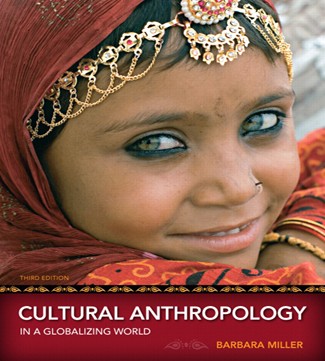
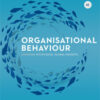
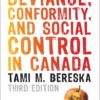

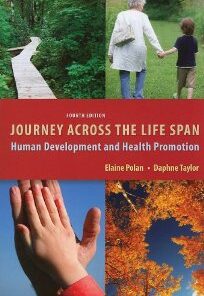

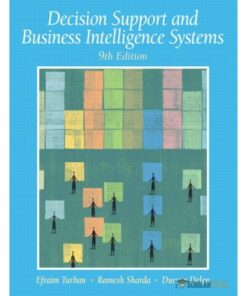




Reviews
There are no reviews yet.